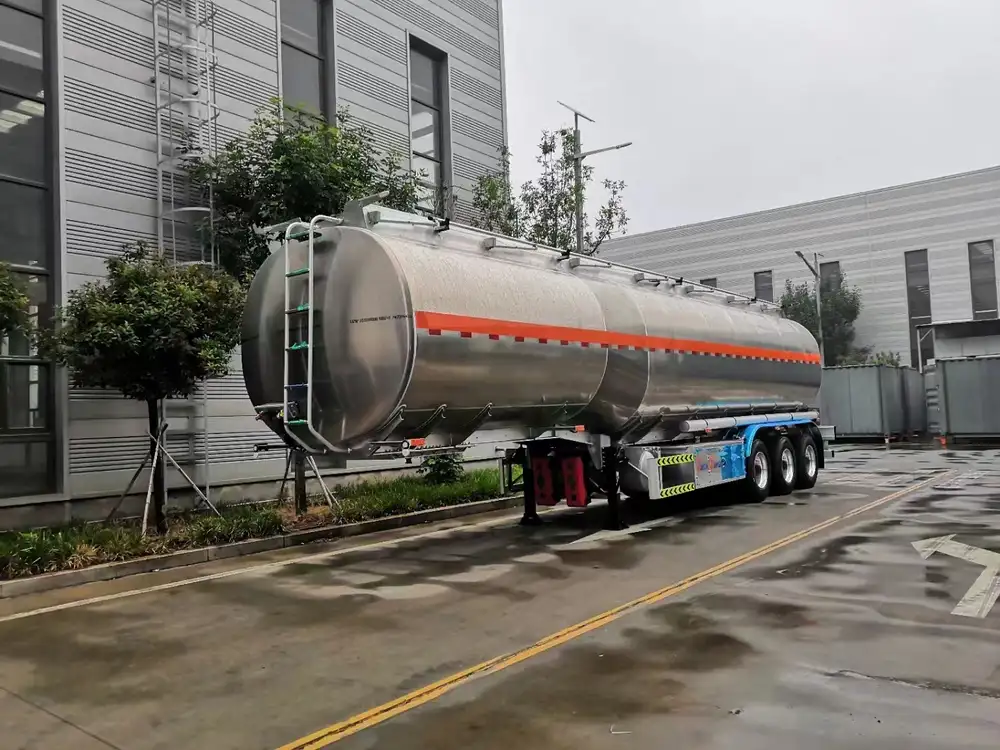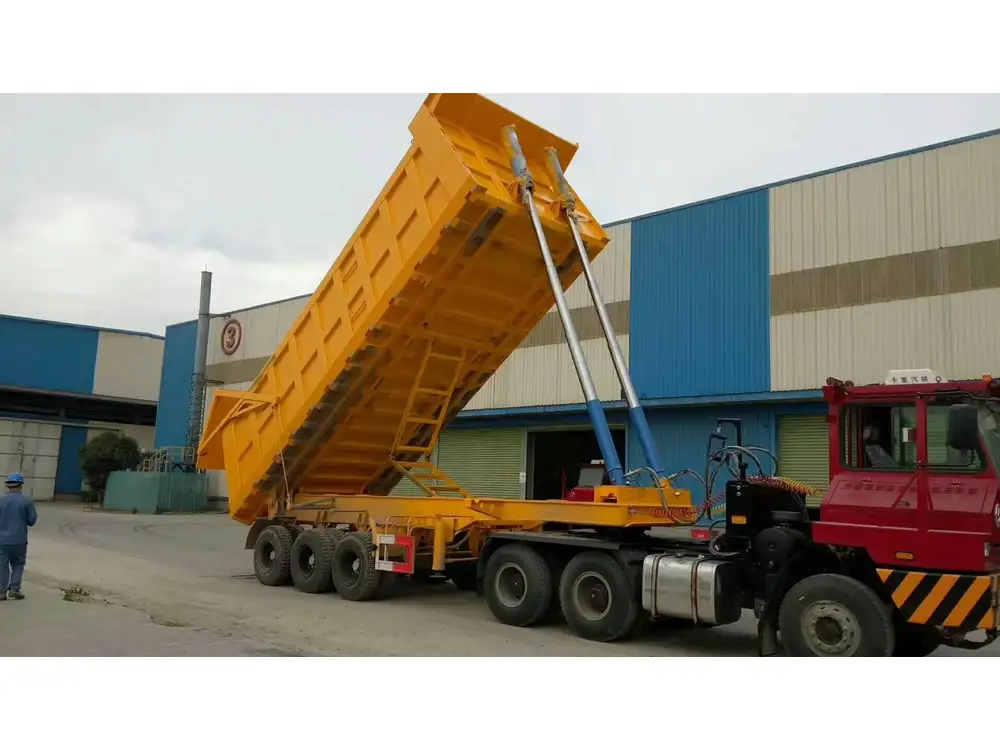When it comes to enhancing the efficiency and performance of dump trailers, making a double-acting cylinder is an essential skill for manufacturers, hobbyists, and professional operators alike. In this detailed guide, we will explore the intricacies of fabricating a double-acting cylinder for dump trailers, from the initial design phase to the practical tips for assembly and maintenance.
Understanding Double Acting Cylinders
Before diving into the manufacturing process, it’s crucial to understand what a double-acting cylinder is and how it operates. Unlike single-acting cylinders, which exert force in one direction using external mechanisms for return, double-acting cylinders utilize hydraulic pressure to move the cylinder rod in both directions. This design significantly enhances functionality and efficiency.
Key Components of a Double Acting Cylinder
In our pursuit of constructing a double-acting cylinder for dump trailers, several key components make up its structure:
| Component | Description |
|---|---|
| Cylinder Barrel | The main body where the hydraulic fluid acts. |
| Piston | The moving component that interacts with hydraulic fluid. |
| Rod | Connects the piston to the external mechanism or load. |
| End Caps | Seal the cylinder ends and maintain pressure. |
| Hydraulic Hoses | Transmit hydraulic fluid to and from the cylinder. |
| Seals and O-rings | Prevent fluid leakage, ensuring efficiency. |

Materials You Will Need
Selecting the appropriate materials is crucial for the durability and effectiveness of your double-acting cylinder. Below is a list of materials you will require:
- Steel: High-strength steel is often utilized for the cylinder barrel, ensuring it can withstand the pressure exerted by the hydraulic system.
- Hose Fittings: These must be compatible with your hydraulic lines.
- Seals and O-rings: Choose high-quality rubber or polyurethane seals to prevent leaks.
- Piston Rod Material: Choose a durable alloy for maximum tensile strength.
- Welding Supplies: Ensure you have a high-quality welder and safety equipment.
Designing the Cylinder
The design phase is fundamental for a successful operation. Here’s a structured approach to designing your dump trailer’s double-acting cylinder:
Step 1: Determine Cylinder Specifications
Assess the operational requirements for your dump trailer. Key specifications include:
- Stroke Length: The distance the piston will travel.
- Bore Size: The internal diameter of the cylinder, affecting force output.
- Pressure Rating: Determine the maximum pressure generated by your hydraulic system.

Step 2: Create a Draft Design
Using CAD software, draft a design that includes all components. Considerations should include:
- Dimensions of the barrel and rod.
- Placement of mounting brackets.
- Hose connection points ensuring ease of maintenance.
Step 3: Calculate Forces and Pressure
Utilizing Pascal’s law, calculate the forces involved during operation:
- The area of the piston is crucial for determining the force applied when hydraulics engage.
- Use this formula:
Force (F) = Pressure (P) × Area (A)
Manufacturing Process

Step 1: Cutting the Steel for the Cylinder Barrel
- Select Steel Plate: Choose high-grade steel appropriate for heavy-duty applications.
- Cut to Required Size: Utilize a plasma cutter or bandsaw for precision.
- Drill Holes: Ensure that the holes for the end caps and hydraulic fittings are accurately placed.
Step 2: Assembling the Components
Piston Assembly
- Creating the Piston: Turn a piece of steel on a lathe to the calculated diameter and ensure a snug fit in the barrel.
- Installing Seals: Ensure that the edges are smooth to facilitate the O-rings’ fitting without tearing.

Attaching the Rod
- Rod Preparation: Ensure the rod has threads for securing to the piston and for external connections.
- Affixing the Piston and Rod: Use lock nuts to secure the rod to the piston.
Step 3: Welding the End Caps
- Position the End Caps: Secure the end caps on each side of the cylinder barrel.
- Weld Securely: Employ a robust welding process (such as MIG or TIG) to ensure that the joints are airtight, preventing leakage.
Step 4: Final Assembly
- Install Hydraulic Hoses: Connect hoses to the pre-drilled fittings and ensure they’re rated for the necessary pressure.
- Testing for Leaks: Once assembled, test for leaks by pressurizing the cylinder with hydraulic fluid.

Maintenance and Troubleshooting
Even the best-manufactured components require maintenance for longevity and reliable operation.
Regular Inspection
- Check for Leaks: Regularly inspect seals for signs of wear or fluid leaks.
- Monitor Hydraulic Fluid Levels: Low levels can compromise performance.
Troubleshooting Common Issues
| Issue | Possible Cause | Solution |
|---|---|---|
| Cylinder Fails to Extend | Low hydraulic fluid or air in the system | Bleed the system and refill fluid |
| Cylinder Leaks | Worn seals or faulty welds | Replace seals and inspect welds |
| Uneven Piston Movement | Misalignment of components | Ensure all components are properly aligned |

Conclusion
Crafting a double-acting cylinder for dump trailers can significantly enhance operational performance and durability. By utilizing high-quality materials, following a well-thought-out design, and adhering to a systematic manufacturing process, you can create a cylinder that meets your demands—saving time, increasing productivity, and ensuring safe hauling.
With regular maintenance and keen troubleshooting techniques, your dump trailer’s cylinder will provide reliable service for years to come. You’re now equipped with the knowledge and skills to manufacture a high-performing double-acting cylinder, transforming operations and driving success in the field.
By following this comprehensive guide, we believe you can enhance product offerings, cater to a broader customer base, and ultimately, establish a name in the manufacturing landscape of semi-trailers.



